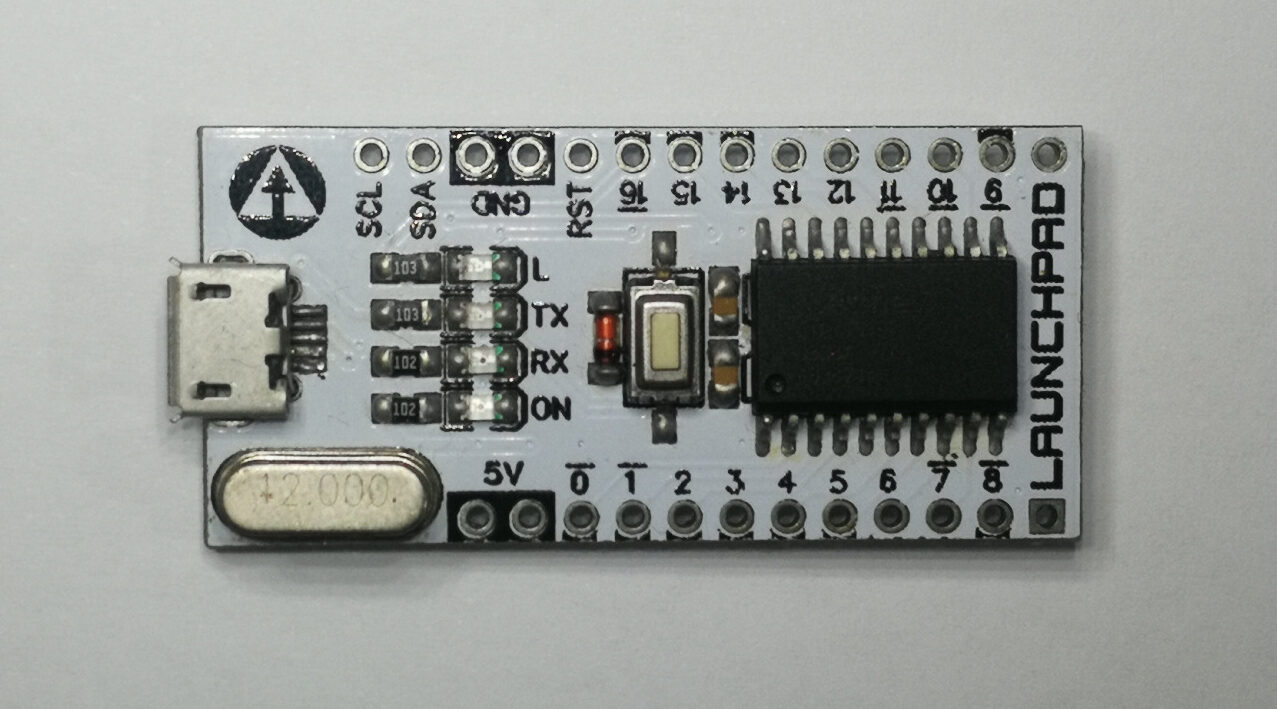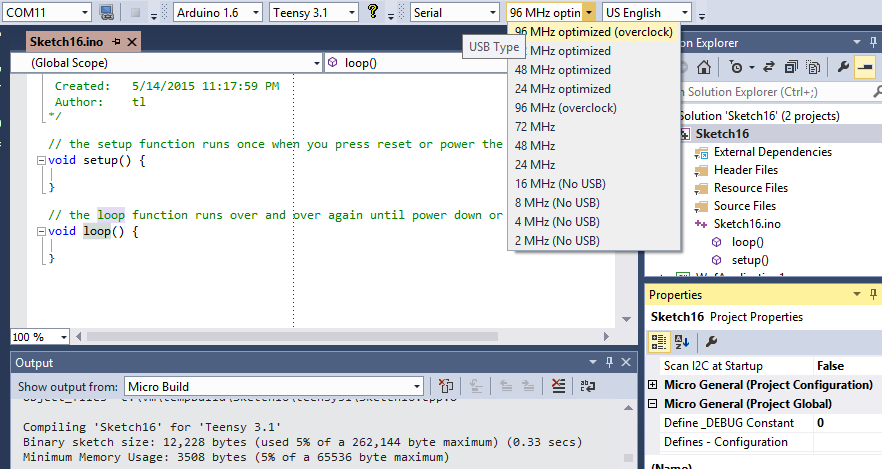
- Arduino undefined visual micro >= 100 how to#
- Arduino undefined visual micro >= 100 update#
- Arduino undefined visual micro >= 100 full#
- Arduino undefined visual micro >= 100 code#
A 0 or LOW switches the pin to ground turning OFF the LED. A digitalWrite() sends either a HIGH or 1 to the pin switching it to 5 volts turning the LED ON. The LED IO pins were programmed as OUTPUT back in setup(). What if I have only 2 switches and must control 2 LEDs? Now is time for electronics. In test 2 I used 2 switches to control 1 LED. Temp = !temp // temp ^ 1 digitalWrite(LED1, temp) (This could also be a motor control for example.) In each case pressing S1 or S2 returns a 1 or 0 the "if" command does the rest.Īnother note is the () must be used properly and in sets of 2. Press S2 and LED1 turns off and stays off. if ( S1() ^ 1 ) is the same as if ( !S1() ). What was "false" before keeping LED1 OFF is now "true" leaving it ON.Ī logical NOT is the same thing as a bitwise XOR. A true is changed to false, a false is changed to true. Understand " if ( S1() )" is understood to be " if ( S1() = 1 )" On every iteration of "loop" S1() is called and returns a 1 (true) or 0 (false).Īnother way to write this to do the very same thing is " if ( !S1() )" will turn OFF LED1 when pressed, ON when released. What if we want to press one switch (S1) to turn LED1 ON, then another (S2) to turn LED1 off? We must leave out the else part of the "if" function and use another "if" function. LED1 is only ON while S1 is pressed by returning a 1 when called. If the switch on DP2 is open it returns 0 or false - thus "else" is executed and LED1 is turned OFF. The compiler defines "false" with the word "false" or the number 0. The Arduino compiler defines "true" as the word "true", the number 1, or any non-zero number.

"Condition" is boolean term using "true" or "false" A "true" condition lights LED1, a "false" condition turns LED1 OFF. An "if" statement has the general form of: Or should I say any value except 0 is TRUE.
Arduino undefined visual micro >= 100 code#
We are concerned with the following: Comparison Operators = (equal to) != (not equal to) (greater than) = (greater than or equal to) Boolean Operators & (and) || (or) ! (not)įrom here on I'll address only the code within loop(). In the electrical sense a HIGH or 1 is 5-volts a LOW or 0 is 0-volts or ground.Īnd "true" can be replaced by "1" or any non-zero number "false" can be replaced by "0". This can be cut and pasted directly to your Arduino compiler.
Arduino undefined visual micro >= 100 full#
The full set up for the above diagram is presented at the bottom of the page. I also wrote a subroutine called POT() that returns an value of 0-1023 from the potentiometer connect to analog pin 0.
Arduino undefined visual micro >= 100 update#
If either S1() or S2() are called a closed switch returns 1 or open switch returns 0 - they also update the LCD display. Instead of constantly typing digitalRead(PIN) I created subroutines S1() and S2(). Internal pull ups are used - switch closed reads as false or 0. Two normally open push button switches are connected to DP2 and DP3 to ground. The use of the I2C LCD display is optional but makes understanding the process easier. The Nano and most Arduino boards today have an LED on digital pin 13 (DP13). I'll assume one can program their Arduino board. 1 shows the test setup for this series, in this case an Arduino Nano.

Results may vary with other compilers or a non-Nano Arduino board.įig.
Arduino undefined visual micro >= 100 how to#
We must tell the "box" how to manipulate the gates and hardware.

To control the "box" we have to tell it what hardware to use. Think of a micro-controller as a box full of basic logic circuits, gates, etc. They have limited knowledge of programming or hardware. Many visitors to my You Tube Channel and this website are beginners. This is part of a series on code snippets for Arduino.


 0 kommentar(er)
0 kommentar(er)
